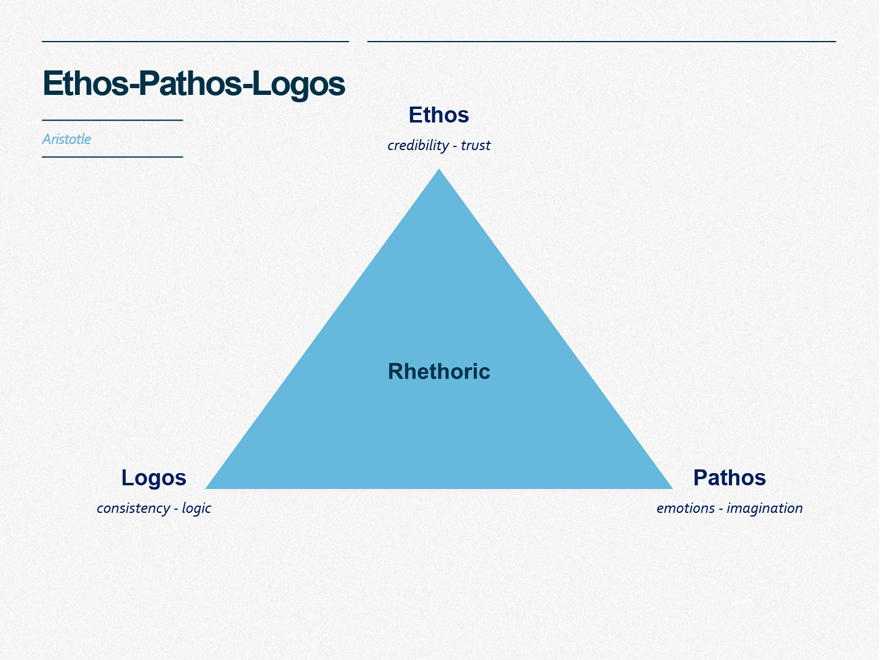Ethos, Pathos, Logos
Originally published 26 Jul 2014
“Rhetoric is the art of ruling the minds of men.” – Plato
Aristotle took rhetoric apart and defined its three distinct aspects: ethos, pathos, logos. Here is his robust framework:

Rhetoric
According to Aristotle, rhetoric is the art of discourse, an art that aims to improve the capacity of writers or speakers to inform, persuade, or motivate particular audiences in specific situations. In short, we use rhetoric to appeal to an audience and win agreement. To do this we use the ‘Five Canons of Rhetoric’: invention, agreement, style, memory, and delivery. We use these canons via three mechanisms: ethos, pathos, logos.
Ethos
Ethos persuades through the character or projected persona of a person. It relies on credibility and trust in the speaker. The main techniques of ethos are: personal branding, confidence in delivery, and citing credible sources.
Pathos
Pathos persuades by appealing to emotions or imagination. It relies on the emotions and values of the listener. The main techniques of pathos are: stories, inspirational quotes, vivid language.
Logos
Logos persuades via proof, logic, and reason. It relies on logical arguments by the speakers. The main techniques of logos are: structure of the speech, references to studies, and comparisons, analogies, and metaphors.
Examples
- Every General Practitioner – ethos: the diploma on the wall, or something like this: “As a doctor, I am qualified to tell you that this course of treatment will likely generate the best results.”
- Robert Kennedy – pathos: when Martin Luther King was shot, Robert Kennedy took the stage – left the notes he got in his pocket – and related to the audience by telling about MLK and how he related because of the loss he experienced himself before. (watch it here)
- Your Professor – logos: reasoning via the scientific method, e.g. : “Because we can travel around the world we can conclude that it is not flat.”
When to Use
A good speaker or writer tries to use at least two different techniques – a great speaker or writer uses all three. In almost all discourse we want to inform, persuade or motivate another person – in each of these cases the three techniques can be used. Dependent on the audience one or two should receive the emphasis.
More on Ethos, Pathos, Logos:
http://en.wikipedia.org/wiki/Rhetoric – Wiki on Rhetoric
https://www.youtube.com/watch?v=oKtQEnERhSY – Introduction to Ethos, Pathos, Logos
http://thelaughlinlab.weebly.com/logosethospathos.html – More on Ethos, Pathos, Logos
http://georgehwilliams.pbworks.com/w/page/14266873/Ethos-Pathos-Logos-The-3-Rhetorical-Appeals – Even more on Ethos, Pathos, Logos
http://classics.mit.edu/Aristotle/rhetoric.html – Rhetoric by Aristotle
